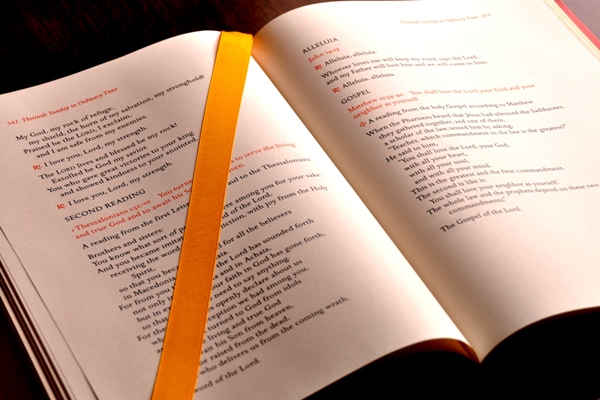Lectionary Statistics
When talking about the Bible, we Catholics inevitably end up talking about the Liturgy of the Word at Mass. I had always wondered how much of the Bible we hear proclaimed in the Liturgy. The other day I got a little curious and tracked done some statistics…

Lectionary Reforms
Prior to the Second Vatican Council, the format of the lectionary was similar to what is used in Eastern Christianity today. In the liturgy there would be a Reading from the New Testament, which was followed by a section from one of the Gospels. Old Testament readings were restricted to weekdays and special feasts. This exposed the layman to 1% of the Old Testament and 16.5% of the New Testament.
However, with the Council came a significant effort to revise the Lectionary:
“The treasures of the Bible are to be opened up more lavishly so that a richer fare may be provided for the faithful at the table of God’s word. In this way the more significant part of the Sacred Scriptures will be read to the people over a fixed number of years”
– Sacrosanctum Concilium, #51
After the Council, the current format of four Readings was adopted: an Old Testament Reading, a Psalm, a New Testament epistle and a Gospel story. These reforms mean that a Sunday Mass attendee now hears 3.7% of the Old Testament and 40.8% of the New Testament. The percentages are even better for those attending daily Mass, coming in at 13.5% for the Old Testament and 71.5% for the New Testament.
Reflection
Some might think that these percentages are still quite low. However, I think two things must be remembered:
1. How much there is to read
It must not be forgotten that the Bible is, well, kinda big. For example, 13.5% of the Old Testament is still 3,378 verses, a significant chunk of the Bible!
2. What is read
It is also significant which parts of the Bible are read. The sections which are read are the portions which are crucial to the story of salvation history, particularly focussing on the covenants in the Biblical narrative, as well as showing the unity of the Bible by arranging the Old Testament Readings to parallel the New Testaments Readings.
Having said that, it still must still be said that even if you go to Mass every day there will still be 86.5% of the Old Testament and 28.5% of the New Testament which you won’t have heard proclaimed. This just goes to show that one should not restrict the reading of Sacred Scripture to the liturgy alone. Instead, the liturgy should be used as a springboard to participation in group studies, as well as private reading and devotions.
Pingback: The Sanctity of the Body – Sinning boldly with Sam